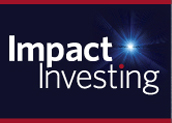Local wind-farms that finance services for low-income people. Microfinance for Native Americans. Conservation easements that protect working waterfronts and the lobster industry in Maine. These are the types of activities financed by community development finance institutions, or CDFIs, most of which are revolving loan funds that serve minorities and low-income people. But while there is huge interest in them by impact investors, it can be baffling to analyze a nonprofit and understand the risk of investing in one.
Fortunately, there is a way. CARS (the CDFI Assessment and Ratings System) is the go-to rating service for these loan funds, most of which are nonprofit. It also performs deep dive due diligence with respect to finances and how well a loan fund is achieving its own specific mission. Unlike conventional rating firms like Moody's or S&P, CARS rates an entire institution rather than individual loans. And its research, which averages 120 hours per CDFI, is primarily financed by investor/subscribers.
"The heavy lifting is done by CARS," says Randy Rice, community impact investments portfolio manager at Boston-based Trillium Asset Management, whose firm supplements the rating firm's 45- to 60-page reports with relationship building and site visits. "We know as investors that a [CDFI] does not have to have the highest CARS rating to still be doing good work and to be moderate risk.
"For us, it is frankly more important that [a CDFI] is CARS-rated than what its CARS rating is," he adds. "That a loan fund has [been willing] to submit to a deep dive analysis shows to a level of maturity."
CARS, like banking regulators, rates loan funds using the CAMEL (capitalization, asset quality, management, earnings, liquidity) analysis. It rates financial strength and performance on a scale of one to five, with one being the highest score. A rating of one, two, or three indicates that finances are sound. A rating of four or five indicates financial vulnerability.
Impact performance ratings include AAA (the highest), AA, A and B. But these letters do not indicate how impactful a loan fund is. "All these institutions have very different missions," says CARS president and CEO Paige Chapel. "What's really fun about CDFIs is the creativity of their business strategies. Literally, no two are alike."
As such, CARS asks the CDFIs to identify the data-points that are meaningful with respect to assessing how well they achieve their missions and explain why. Ultimately, CARS assesses how well each CDFI is achieving its own mission based on the data it collects. The A ratings indicate relative degrees of success; a B rating may indicate lack of alignment of mission, strategies, activities and data.
With respect to making a social impact, CARS also recognizes that policy change is the way to affect the lives of millions of people. In that light, it awards CDFIs a "policy plus" if they can demonstrate that changing public policy is a critical part of their agenda and they have devoted staff and budget to it. CARS has rated 75 CDFIs representing about half of the $11 billion in on-balance sheet assets for the industry's loan funds. According to Chapel, about 45% of them have won the "policy plus" designation.
Driving Financial Standardization
As tax-exempt nonprofits, the IRS wants to be sure that CDFIs are true to their mission. But as financial institutions, they are unregulated. Although there are GAAP principles, the question is whether they should be presented as nonprofits or financial institutions. Beyond that, conventional capital ratios are not appropriate because an estimated 5% to 80% of revenues may derive from grants or government contracts and therefore be restricted.
"If you are looking at investing in them and you want to understand risk, you need much more nuance," Chapel says. "You need to know how much money they are making from their financing activity, and you need to understand the restricted revenues and separate them out."

